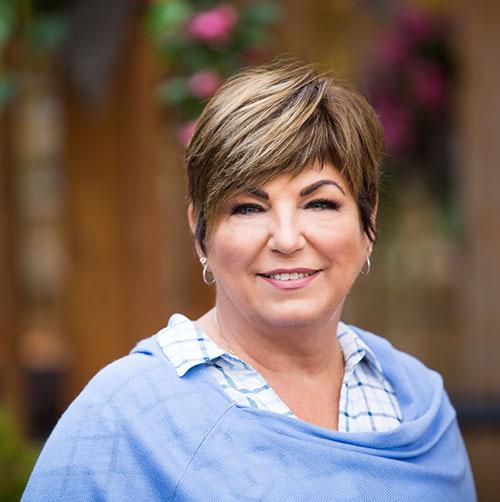Barrie Mortgage Blog
Barrie, Newmarket, Orillia, Simcoe County, Midland, Collingwood, Wasaga Beach Mortgage Broker of Choice
How Does a Reverse Mortgage Work In Canada?
December 4, 2024 | Posted by: Della Dwyer - Your Trusted Barrie and Surrounding areas Mortgage Broker
For Canadian homeowners approaching or already in retirement, a reverse mortgage can be an appealing financial option. This type of loan allows older homeowners to access the equity in their homes without having to sell the property.
While reverse mortgages can provide a steady source of cash flow, it’s essential to understand how they work, their benefits, and potential drawbacks before applying for one.
Here’s what you need to know about reverse mortgages in Canada.
What Is A Reverse Mortgage?
A reverse mortgage is a loan secured against the value of your home that allows you to borrow a percentage of your home’s equity. Unlike traditional mortgages, where the homeowner makes monthly payments to the lender, with a reverse mortgage, the lender makes payments to the homeowner.
Borrowers do not have to make regular payments towards the loan as long as they continue to live in the home. The loan is repaid when the homeowner sells the property, moves out, or passes away.
In Canada, reverse mortgages are available to homeowners aged 55 and older.
The amount you can borrow depends on factors like your age, the value of your home, its location, and current interest rates.
The older you are, the more equity you can access.
How Do Reverse Mortgage Work?
Understanding how a reverse mortgage works can help you determine if it’s the right financial solution for you.
- Accessing Home Equity: With a reverse mortgage, you can receive the funds as a lump sum, regular monthly payments, or a combination of both. This flexibility allows homeowners to tailor the reverse mortgage to suit their financial needs.
Interest Accumulation: Interest on the loan accumulates over time, but payments are not required until the homeowner sells the home or passes away. The interest is added to the loan balance, meaning the amount owed grows over time.
Repayment of the Loan: The loan, along with any accumulated interest, becomes due when the homeowner no longer lives in the home. At that time, the loan is typically repaid from the sale of the home. Any remaining equity after repayment is left to the homeowner or their heirs.
Key Benefits Of A Reverse Mortgage
Reverse mortgages offer unique advantages for homeowners who are 55 or older and looking for a way to access their home equity without monthly payments or needing to move.
Here are some of the primary benefits that make reverse mortgages appealing to many Canadians in retirement.
No Monthly Payments
One of the most attractive aspects of a reverse mortgage is that it doesn’t require monthly payments, helping those on a fixed income to maintain cash flow without taking on additional financial burdens.
Tax-Free Cash Flow
The funds from a reverse mortgage are not considered taxable income, allowing retirees to access additional funds without affecting their taxable income or government benefits.
Stay In Your Home
For retirees who wish to remain in their current home but need additional funds for living expenses, healthcare, or other costs, a reverse mortgage allows them to stay put without downsizing or selling.
Flexible Access To Funds
Homeowners can choose how they wish to receive the funds—whether all at once, in monthly payments, or as needed.
Potential Drawbacks Of A Reverse Mortgage
While reverse mortgages offer several benefits, they also come with certain downsides that should be carefully considered. From accumulating interest to potentially affecting inheritance, here are some key drawbacks to keep in mind.
Accumulating Interest
Since interest accrues over time, the amount owed can increase significantly, reducing the amount of equity left in the home for future needs or inheritance.
Home Ownership Costs
Homeowners are still responsible for property taxes, insurance, and maintenance costs. Failing to keep up with these obligations could lead to a default on the loan.
Impact on Inheritance
A reverse mortgage reduces the home’s equity over time, potentially leaving less for heirs. It’s important for homeowners to discuss this with their families to avoid surprises.
Higher Interest Rates and Fees
Reverse mortgages typically come with higher interest rates and fees compared to traditional mortgages or home equity lines of credit. This can increase the total cost of borrowing over time. In addition to interest, there can be other fees associated with reverse mortgages such as appraisal fees, set-up fees, legal fees and more.
Qualifications and Conditions for a Reverse Mortgage in Canada
In Canada, there are a few basic requirements to qualify for a reverse mortgage:
Age Requirement: The homeowner(s) must be at least 55 years old.
Home Ownership: The property must be the homeowner's primary residence.
Equity in the Home: You are generally only able to borrow up to 55% of the current value of your home.
Limited Lenders: HomeEquity Bank, with its CHIP Reverse Mortgage, and Equitable Bank are the two main providers of reverse mortgages in Canada. However, there are other provincially regulated financial institutions who may offer this service. Each provider has slightly different requirements and terms, so it’s wise to review their offerings carefully.
Is a Reverse Mortgage Right for You?
A reverse mortgage can be beneficial for older homeowners who need to access cash but want to stay in their homes. But, it’s essential to consider all financial options, as a reverse mortgage might not be the best choice for everyone.
Alternatives, such as a home equity line of credit (HELOC) or downsizing to a more affordable property, may also provide access to funds with potentially lower costs.
Regardless of what you decide, understanding how this financial tool works, along with its pros and cons, is crucial for making an informed decision.


